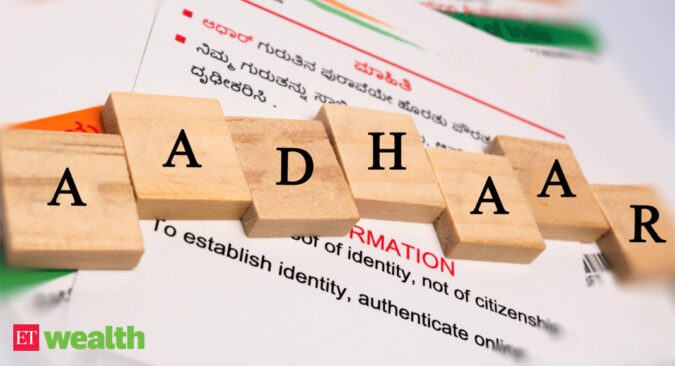There are various ways by which an Aadhaar has impacted the daily lives of citizens. The Economic Survey 2023 has mentioned some as follows:
Aadhaar – Usage in Direct Beneficiary Transfer (DBT): According to the Survey, when an Aadhaar number is linked with a bank account, Aadhaar becomes the “financial address” of an individual. It helps to accomplish the country’s goal of financial inclusion. The Aadhaar number is sufficient to transfer any payment to an individual’s bank account through the Aadhaar Payment Bridge (APB). It eliminates the need to give other details such as the bank account, IFSC Code or bank branch details to the government/institutions to receive money.
Aadhaar Enabled Payment Systems (AEPS): This payment system helps an individual to do basic banking transactions, such as withdrawal, cash deposit, transfer of funds from his bank account by simply using his Aadhaar number. This has immensely facilitated providing door-step banking services and helped mitigate the hardships of the people due to the Covid-19 pandemic.
JAM: Jan-Dhan, Aadhaar and Mobile trinity or commonly known as JAM, combined with the power of DBT, has brought the marginalised sections of society into the formal financial system. It has revolutionised the path of transparent and accountable governance by empowering the people. Till November 2022, multiple large central schemes, including PAHAL and MGNREGS, have paid over Rs 7,66,055.9 crore through 1,010 crore successful transactions.
One Nation One Ration Card (ONORC) Scheme: Aadhaar has played a key role in the implementation of the ONORC Scheme. While Aadhaar seeding of the Public Distribution System (PDS) database has resulted in significant savings by eliminating ghost and duplicate beneficiaries, grain disbursal through Aadhaar-based biometric authentication has brought meaningful transparency and improved the back-office functions of the logistic network of PDS. Free distribution of food grains under the Pradhan Mantri Garib Kalyan Yojana (PMGKY) has greatly mitigated the pandemic’s impact, especially for the weakest and the most vulnerable sections of society.
PM Kisan Samman Nidhi: The Aadhaar platform forms the backbone for the implementation of this scheme, right from registration through Aadhaar eKYC to DBT through the APB.Co-WIN: Successful management of the Covid-19 pandemic would not have been possible without the Co-WIN platform. Aadhaar played a vital role in developing the Co-WIN platform and in the transparent administration of over 2 billion vaccine doses.
Face Authentication: The use of face as an additional modality of authentication is increasing. This has helped, especially the elderly, to get Jeevan Praman through their smartphones to get pension. This is especially true where fingerprint biometric does not work.
Paul Romer, a Nobel laureate and former World Bank Chief Economist, has described what 135 crore citizens of India, which is 94% of the population and 100% of the adult (>18 years) population, have as “the most sophisticated ID programme in the world.”
Aadhaar provides a conclusive connection between the photograph of the Aadhaar holder, his/her fingerprints, and iris scan details.
